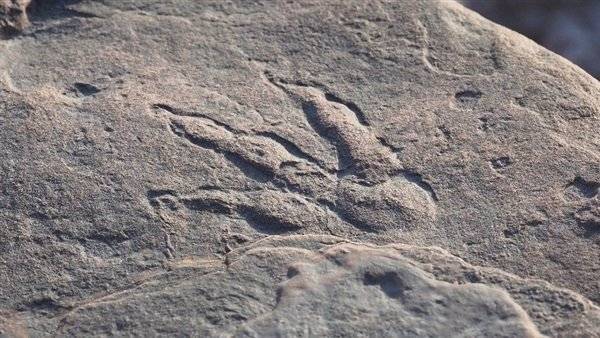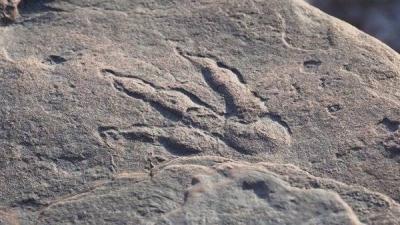Scientists are always seeking more information about dinosaurs, and distinguishing certain details from existing fossils can be challenging. Recently, a four-year-old girl from Wales, UK, was visiting the seaside with her father and dog when she discovered well-preserved dinosaur footprints.
The fossilized imprint was so well-preserved that paleontologists worldwide became very excited about studying it. The young girl who made the discovery is named Lily Wilder, and she found these remarkable fossils near Pendine Bay in south Wales. Researchers believe these footprints were made about 220 million years ago. Lily's mother mentioned that her daughter spotted the footprints on a rock that was shoulder-height. Additionally, she stated that Lily was thrilled about the discovery but did not fully grasp how amazing it was.
Lily and her father took pictures of the footprints while on the beach and shared them with family, who encouraged them to contact local experts for further investigation. According to researchers, it is impossible to pinpoint the exact type of dinosaur that left the footprints, which measure 3.9 inches in length. However, they believe that the dinosaur was approximately 29.5 inches long and about eight feet wide, likely a slender creature with a tail that walked on its hind legs and chased small animals and other insects.
It is noteworthy that these footprints have been named grallator, and they could help scientists learn more about how dinosaurs walked. What is particularly exciting about these footprints is the excellent preservation, allowing scientists to see every detail of the muscles and where the joints are in the foot as well. Similar footprints have been discovered in the United States, but the difference with the footprints found in Wales is that no fossilized bones are available for comparison. The fossil has been safely removed from the area and will be transported to the National Museum Cardiff for study by scientists and display to the public.




